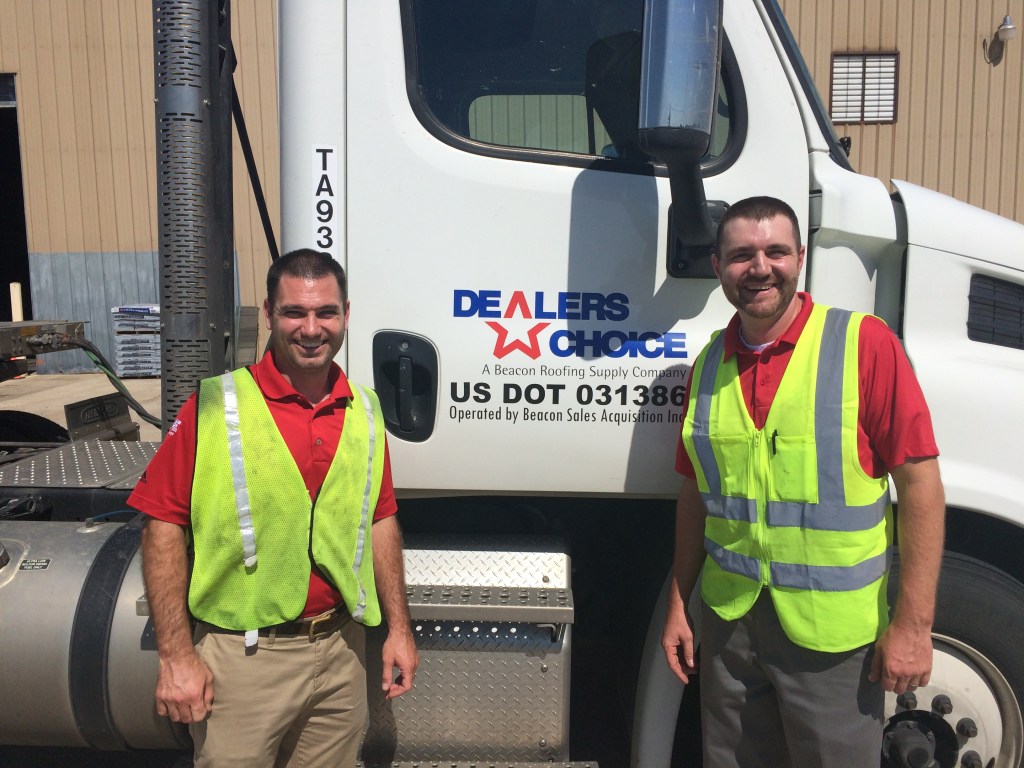Leaning on R&R Contractors
To answer those questions, one must be clear-eyed about one-steppers’ strengths and weaknesses, as well as acknowledge that the recession dented a lot of them, too. In its fiscal year ended Sept. 30, 2010, Beacon Roofing’s net income fell by 34%. And for calendar year 2010, L&W Supply, the distribution division of USG Corp., lost $97 million. Norandex has closed or consolidated nearly 50 branches since Saint-Gobain acquired the window and siding distributor in 2007.
Norandex’s customer base still includes a “healthy mix” of new-construction pros, says Van Garber, its vice president of marketing. But his company and other one-steppers cushioned the severest blows from the economic downturn by falling back on business from repair and remodeling contractors (who account for 95% of SRS’s business, says Ross) and commercial contractors. Neither of those sectors unraveled the same way homebuilding did over the past four years.
Delta Gypsum, a one-stepper that operates three branches in North Carolina and one in Tennessee, is generating more than half its sales from commercial customers, says vice president David Ritchie. And for the quarter ended Dec. 31, Beacon reported its sales to residential contractors, which represented 43.9% of its revenue, dropped 0.8% from the year-earlier quarter. Sales to commercial contractors, 40% of its total, rose 13.6% to $158.1 million.
That focus on remodelers and commercial contractors isn’t something that’s exclusive to one-steppers; full-service LBM dealers also pursue these customers. But in general, two-steppers have been associated more with new-home builders. In particular, some of the biggest and most-discussed pro dealers have been captivated in recent years by the siren’s song of production builders, and thus set themselves up for big trouble when the new-home market tanked.
As a result of the new-homebuilding crash, lots of full-service LBM operations have pursued remodelers and commercial projects with greater vigor; even Builders FirstSource, arguably the nation’s most production builder-oriented LBM dealer, says it’s tweaking its operations to be more appealing to remodelers. But while dealers have only in the past few years entered this segment, one-steppers have been there all along.
Given that move toward the repair/remodel market, it’s likely that lumberyard owners increasingly will keep an eye on local one-steppers. That’s no big surprise to Bryan Tolles, a vice president with BlackEagle Partners–the private equity firm that helped assemble the financing for US LBM Holdings, the Green Bay, Wis.-based lumber and building materials distributor with 30 branches in six states. He says he doesn’t differentiate at all between pro dealers and one-steppers as competitors.
A Better Model? The rise in specialty dealers’ popularity among pros was inevitable, says Jason Fraler, an associate with Building Industry Partners, a Plano, Texas-based private equity firm that focuses on the building industry. Once the Internet blossomed, and product listings and availability exploded, contractors got savvier and more specialized. “It was impossible to be an expert in every single product anymore,” Fraler says. So one-steppers filled a knowledge void and became more important to pros and manufacturers.
“If you’re a drywall contractor and only do one thing, why would you involve a lumberyard?” asks Fraler.
As contractors leaned toward specialists, distributors gained a rebate advantage over pro dealers. Manufacturers–especially roofing suppliers–helped protect specialty distributors’ bottom lines by controlling their production and keeping prices stable. “That’s the antithesis of lumber mills that kept producing no matter what was happening in the market,” Fraler says.
Specialization has competitive virtues when it comes to customer service, say one-steppers. They claim they are meeting contractors’ needs more intensely and personally than pro dealers.
“Our guy quoting the price is usually the same guy who throws some extra pieces in the back of his truck and brings them out to the customer’s job site,” says Ritchie of Delta Gypsum.
The strength of L&W’s business model “is in the last mile of distribution,” says CEO Brendan Deely. “We’re an execution business, and have the equipment and crews that pro dealers typically don’t. Ninety-nine percent of what we sell we’ll put in the building where [our customers] want it.”
Consistent service is costly to maintain. Like their full-service counterparts, one-steppers operate on tight margins, so they need to have their operational houses in order to make money. But here’s the rub: With specialization come customers’ expectations that even their most arcane product request can be filled quickly. Sometimes, that means distributors are stocking items that turn only once a year, or even less frequently.
Consequently, one-steppers must be “masters of inventory management,” says Emily Ethington, senior sales specialist for DMSi, an Omaha, Neb.-based computer systems provider for building material dealers and distributors.
Ethington, who focuses on roofing, siding and drywall distributors, says one-steppers–more so than pro dealers or two-step distributors, in her estimation–jump on manufacturers’ special deals and know how long a product is going to sit in their warehouses. “They also seem more aware of their carrying costs,” she observes.
Ethington notes that one-steppers were among the first companies in this sector to outsource information technology “so they could concentrate on what they do best, which is selling.”
IT is critical, she explains, because “it’s a business of inches and angles, and these guys will run software really hard just to get another half point of margin or half a turn.”
Computerization facilitates better logistics and communications with suppliers about demand, so there’s virtually nothing a customer might order that specialty distributors can’t confidently promise to deliver from vendors within a week to 10 days.
“We’re going to stock those 15 colors of roofing shingles, whereas a sleepy lumberyard might stock only the five best sellers,” says Bruce Myers, president of Topeka, Kan.-based Midway Wholesale, with nine branches. “But we’ll probably stock only one job’s worth (of the slower movers) and rely on manufacturers to backfill.”



